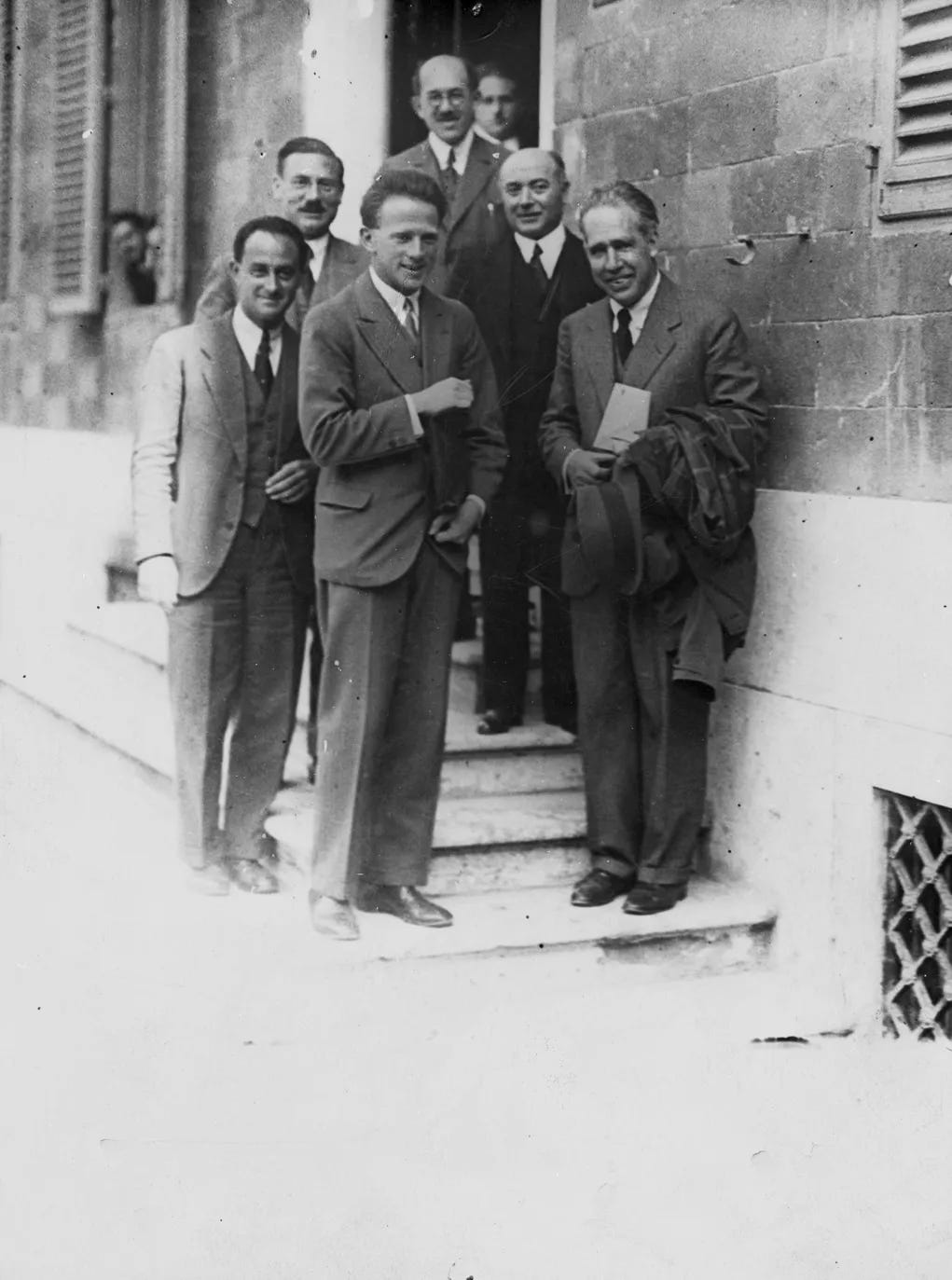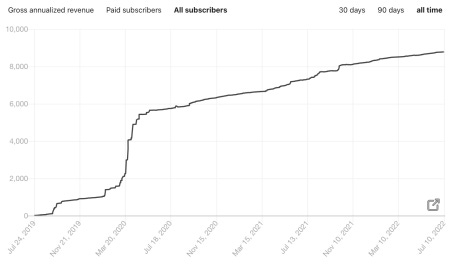This is the continuation of our Grow interview series, designed to share the nuts and bolts of how writers have gone independent and grown their audiences on Substack.
We invited Jørgen Veisdal, who writes Privatdozent, to share insights on how he’s created an archive of evergreen posts that continues to serve as the best marketing to grow the audience.
This interview has been lightly edited for length and clarity.
What’s your Substack about in one sentence?
Privatdozent is an indulgence in early and mid-20th-century mathematics, physics, and economics.
Who reads Privatdozent?
I’d venture to guess that if I removed all engineers, academics, and technologists from my audience, I’d have less than a quarter remaining. The median reader of Privatdozent has a strong interest in the history of science. In particular, perhaps, in reading about mythical characters of early and mid-20th-century science such as von Neumann, Gödel, Dirac, Turing, and Nash.
I know that at least two Nobel laureates subscribe. The passionate readers are probably those who wish they could make scientific pursuit a larger part of their working lives. May they be engineers, college dropouts, or simply passionate retirees, hobbyist scientists are very important to a newsletter like mine.
What do you offer readers?
I’d hate if reading Privatdozent felt like a chore. I’ve heard from quite a few readers that one of my newsletters made them aware of a topic or story that later sparked an obsession.
Privatdozent offers readers a combination of interesting topics, attention to detail, and a particular tone of voice. I generally never dive too deep into mathematical formulae or technical scientific results.
Growth by numbers
Started Substack: July 2019
Started publishing regularly and launched paid subscriptions: March 2021
Total free subscribers: 9,000
Total paid subscribers: Just under 200
Why did you decide to go paid?
I defended my Ph.D. in 2021 and launched Privatdozent three days later. At this point, I was working part time as an assistant professor, and I was looking for a creative outlet to give me more immediate satisfaction from writing.
I had started a publication called Cantor’s Paradise on Medium two years before, which was doing quite well. However, I was unsatisfied with the direction that platform was headed and wanted more ownership of my writing, both creatively and strategically. Substack was a natural choice. I truly enjoy writing and hearing back from my audience about little nuances and details I omitted or got wrong. They are a community of readers. It’s quite special at times.
What types of posts do you make free and which do you make paid?
My main content is long-form essays. I also do audio versions of popular essays, book recommendations, and something I call “Photo Edition,” which are historical photographs with brief stories and relevant links. Every piece of content serves to promote my essays.

Because I write about historical topics, my newsletters are essentially evergreen; they never grow old. Much like an art, cooking, or music Substack, my old newsletters can be just as interesting to a new reader as my newer stuff.
When I went paid, my thinking went as follows: Most people are not yet subscribers of Privatdozent. Therefore, everything I put out should be free so that as many people as possible will want to subscribe. Old content, however, could be paid because new readers will likely find it just as interesting as new content.
My model: Every newsletter is free to receive and remains free to access via the website for seven days. After that point, it goes into the archive, which is exclusive to paid subscribers. Early subscribers benefit because they have the archive in their inbox and can always access it there. The incentive for new readers to go paid increases over time as the archive grows.
Find a model that works for you. Play with the free preview feature. Experiment with what you offer your most devoted fans.
Because I write about historical topics, my newsletters are essentially evergreen; they never grow old.
How did you decide to price Privatdozent?
I started at $5 per month but quickly increased to $7 ($60 for a year). Although I don’t provide a “must-have” newsletter that people rely on in their work, I believe my writing is valuable to those interested in the topics I cover. My revenue from Substack only goes to cover expenses related to research and the recording and editing of audio essays. Anything I earn, I invest back in the newsletter.
Keep reading: Introducing Privatdozent
What has been a meaningful moment for the growth of the publication?
Privatdozent has its biggest spikes in traffic when a newsletter gets to the front page of Hacker News or a relevant subreddit like r/physics or r/compsci. However, the growth (in terms of free subscribers) so far has been remarkably slow and steady, perhaps related to the nature of the topics I write about.
What is the sharpest insight you can offer other writers about growing a Substack publication?
Be unafraid of reaching out to people you think might be interested in reading. This could be people you know personally or people you follow on Twitter. If you believe they would enjoy your newsletter, why not reach out and tell them? Don’t be glib about it; just tell them in your own words why you are reaching out.
Find subreddits full of people interested in the same topics that you write about and post links to newsletters there. This has done wonders for my readership in addition to giving me a plethora of ideas for future essays. When dealing with Reddit, know that each subreddit can have its own vibe and atmosphere. Some are very optimistic, joyful, and supportive while others are downright hostile. The exercise is finding the right ones and understanding what those communities will be interested in. Never flood a subreddit with posts. Participate in other threads. For them to want to join your community, you should want to join theirs.
Who’s another Substack writer you’ve turned to for guidance or inspiration?
My favorite writer is Robert Wright, author of the Nonzero Newsletter. I wouldn’t say that I’ve used his publication for guidance about growth, but the distinctiveness in his tone of voice is unparalleled in my opinion.
Takeaways
Make the most of evergreen writing. Jørgen’s archive is his most valuable asset. He developed a model, putting archive posts behind the paywall seven days after they are published, which works for him.
Promote your paid work to your free readers. In each new newsletter, Jørgen links to paid posts from the archive on related topics. Your posts can be one of the most generative spaces to convert casual readers into paying subscribers.
Great writing is valuable. A lot of writers underprice themselves, but Jørgen knows his worth.
What questions do you have for Jørgen that we didn’t ask? Leave them in the comments!
To read more from this series on growing your publication, see our interviews with Anne Byrn, Nishant Jain, Michael Fritzell, Glenn Loury, Erik Hoel, Jessica DeFino, Mike Sowden, Elizabeth Held, Jonathan Nunn, Polina Pompliano, Michael Williams, Judd Legum, and Caroline Chambers.












Share this post